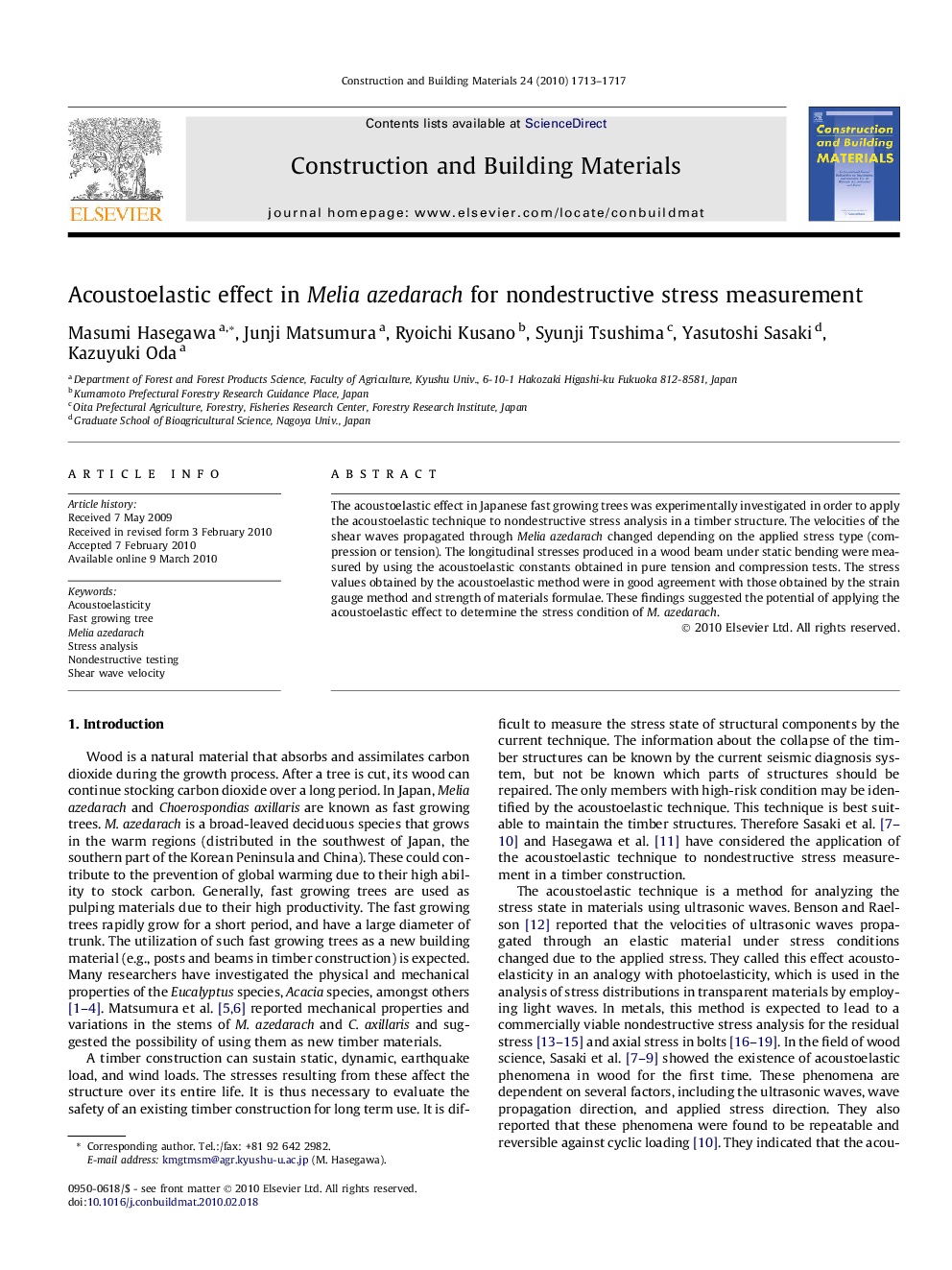| Article ID | Journal | Published Year | Pages | File Type |
|---|---|---|---|---|
| 260102 | Construction and Building Materials | 2010 | 5 Pages |
The acoustoelastic effect in Japanese fast growing trees was experimentally investigated in order to apply the acoustoelastic technique to nondestructive stress analysis in a timber structure. The velocities of the shear waves propagated through Melia azedarach changed depending on the applied stress type (compression or tension). The longitudinal stresses produced in a wood beam under static bending were measured by using the acoustoelastic constants obtained in pure tension and compression tests. The stress values obtained by the acoustoelastic method were in good agreement with those obtained by the strain gauge method and strength of materials formulae. These findings suggested the potential of applying the acoustoelastic effect to determine the stress condition of M. azedarach.
